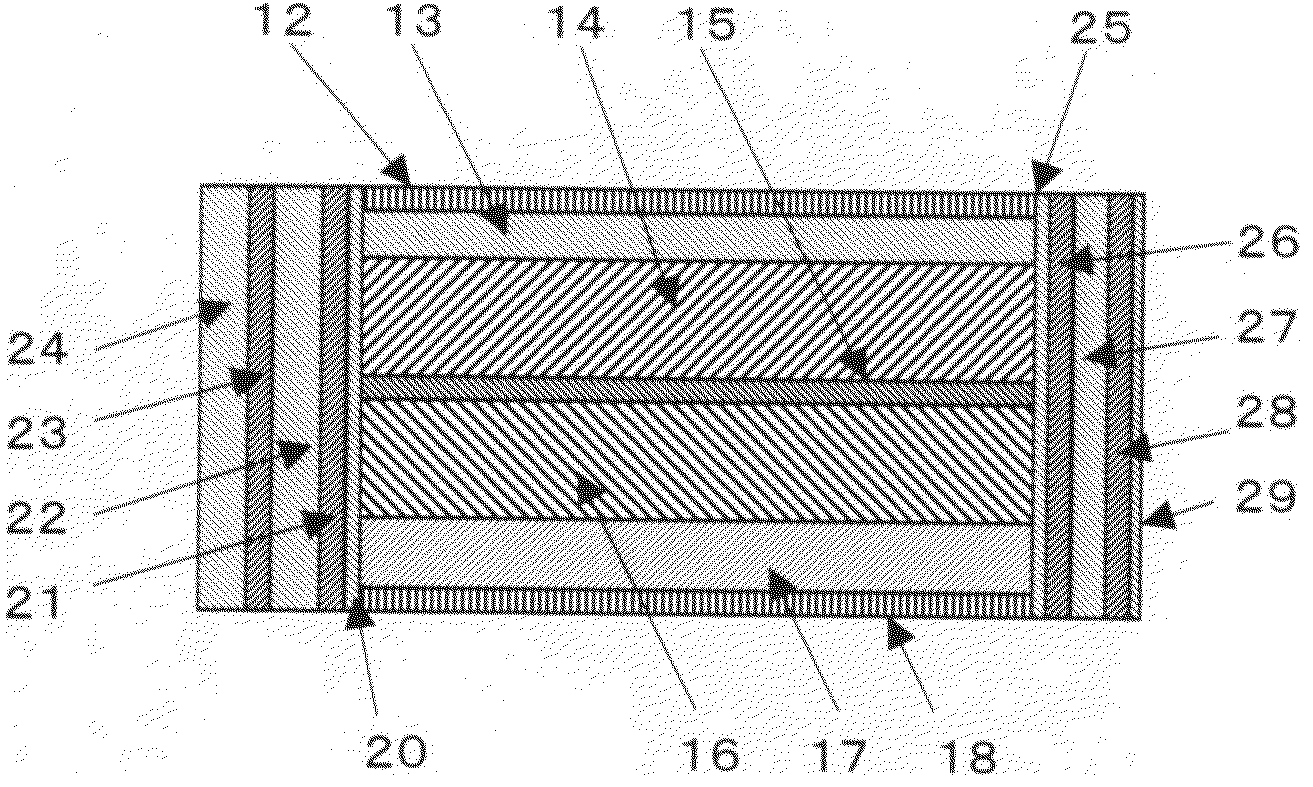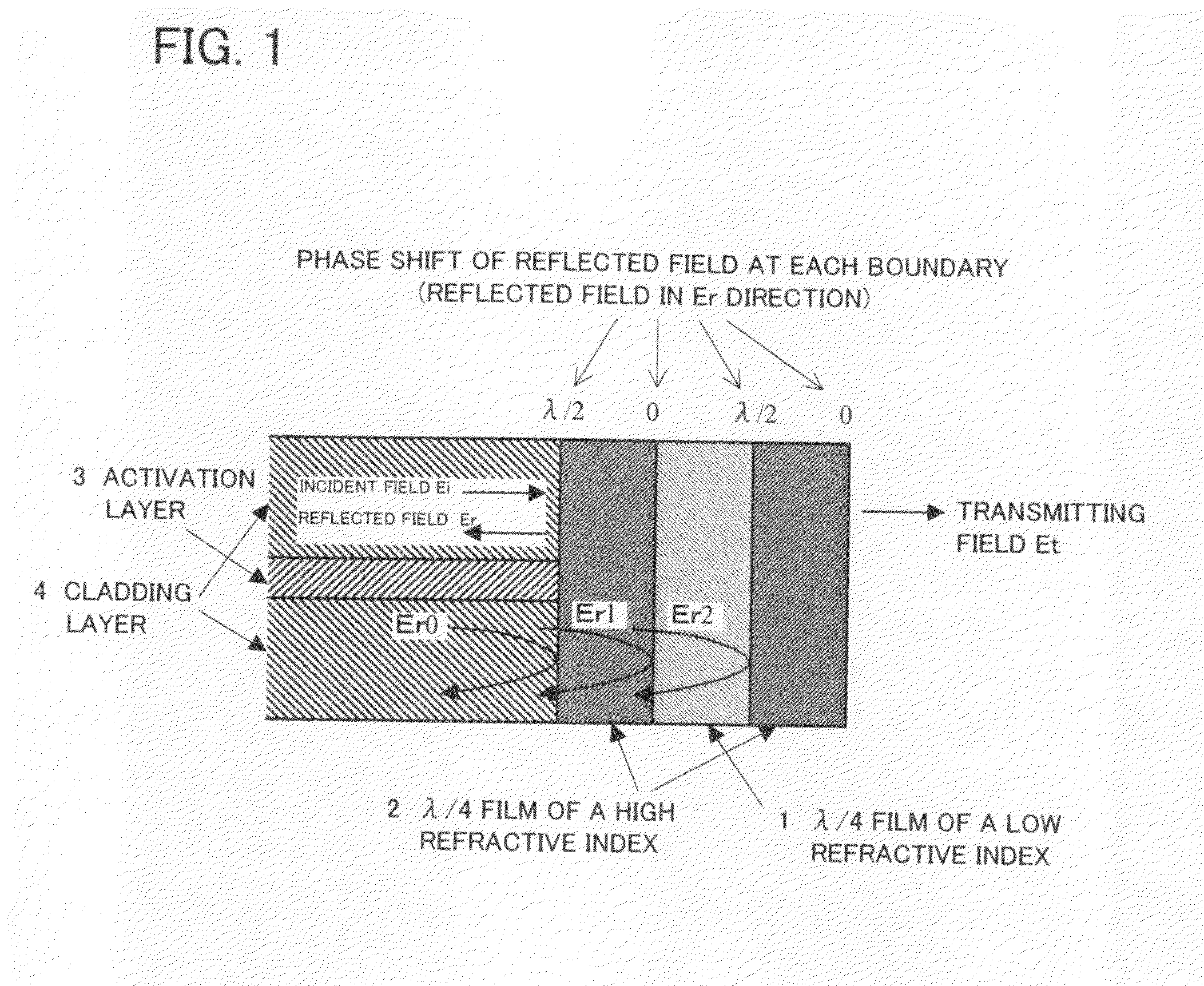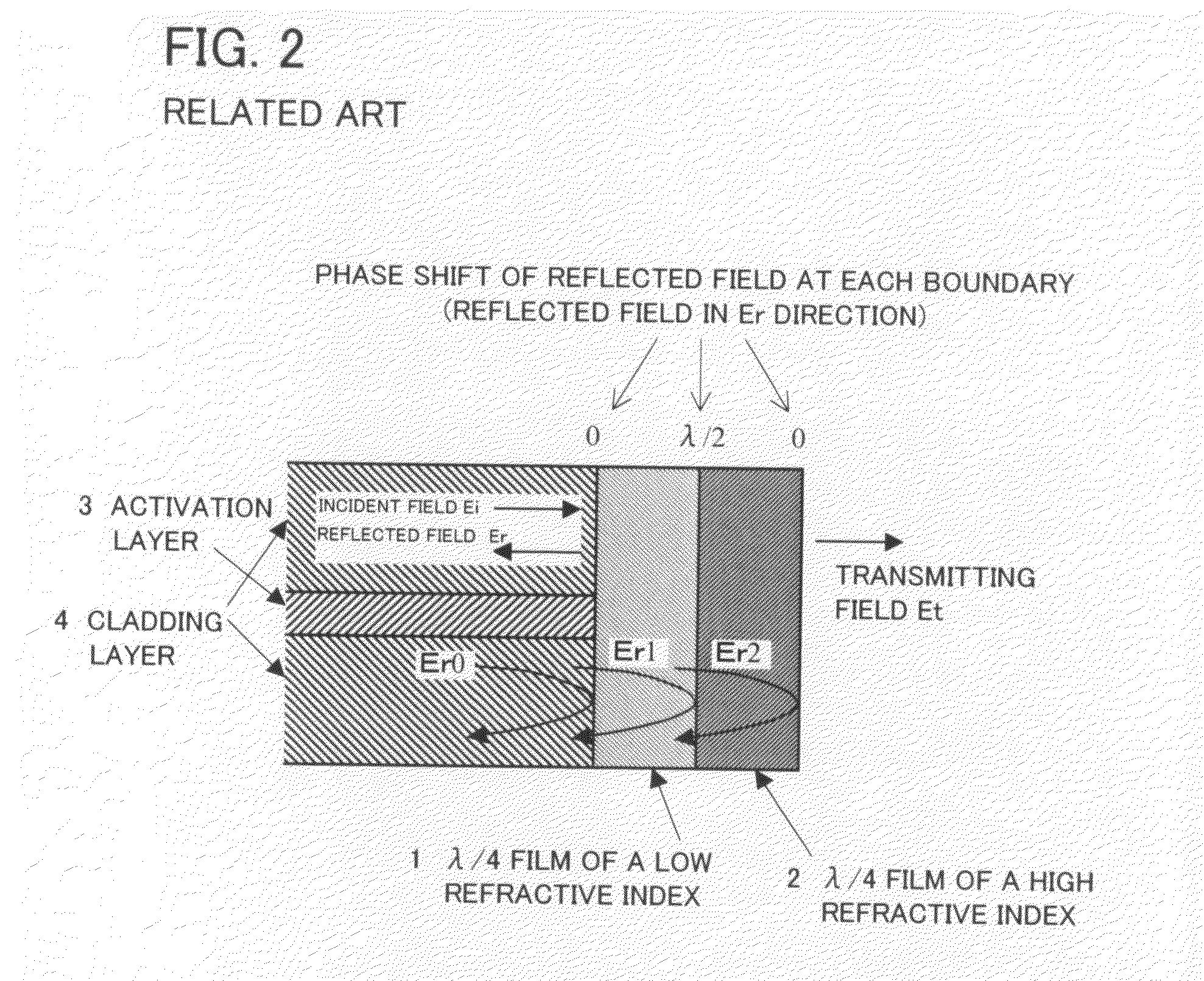Semiconductor laser element and method for producing same
a semiconductor and laser element technology, applied in semiconductor lasers, laser details, optical resonator shape and construction, etc., can solve the problems of inability to achieve the required characteristics for each use, inability to guarantee or esd tolerance, and reduced cod light output, etc., to achieve reliable operation, reduce the intensity of the electric field of a facet portion, and high cod light output
- Summary
- Abstract
- Description
- Claims
- Application Information
AI Technical Summary
Benefits of technology
Problems solved by technology
Method used
Image
Examples
example 1
[0075]FIG. 3 illustrates a sectional view of a semiconductor laser element according to Example 1 of the present invention. The semiconductor laser resonator is made of a stack (laminate) including n-InP cladding layer 16, AlGaInAs multiple-quantum well activation layer 15, p-InP cladding layer 14 and p-InGaAs contact layer 13, stacked on an n-InP substrate 17, and further N-terminal 18 and P-terminal 12 so as to sandwich the stack. Coating films 5-11 are also formed at both facets of the resonator. High refractive index coating films 5, 7, 9 and 11 are made of amorphous Si (a-Si) and their thickness is 92.9 nm each whose optical path length is equal to λ / 4 of an oscillation wavelength λ=1.3 μm. Low refractive index coating films 6, 8 and 10 are made of Al2O3 and their thickness is 197 nm each whose optical path length is equal to λ / 4. Refractive indexes (N) of the amorphous Si (a-Si) and Al2O3 are 3.5 and 1.65, respectively. The front facet of the resonator is coated with four laye...
example 2
[0082]Although, the first layer adjacent to the semiconductor of Example 1 has a high refractive index as shown in FIG. 3, it is also possible to make the first layer as a low refractive index layer. FIG. 7 illustrates a cross sectional view of a semiconductor laser element according to Example 2 of the present invention, the first layer of which is a low refractive index layer. The semiconductor laser resonator is made of n-InP cladding layer 16, AlGaInAs multiple-quantum well activation layer 15, p-InP cladding layer 14, p-InGaAs contact layer 13, and P-terminal 12 are stacked on an n-InP substrate 17, in this order, provided that N-terminal 18 is formed on the other side of the substrate 17. And coating films 19 and 5-11 are formed at the both facets of the resonator. Both first coating films 19 adjacent to the semiconductor are made of Al2O3 and each thickness of the films is 394 nm, whose optical path length is λ / 2 relative to an oscillation wavelength λ=1.3 μm. The structures ...
example 3
[0084]FIG. 8 illustrates a cross sectional view of a semiconductor laser element according to Example 3 of the present invention, the first layer of which is a low refractive index layer. The semiconductor laser resonator is made of n-InP cladding layer 16, AlGaInAs multiple-quantum well activation layer 15, p-InP cladding layer 14, p-InGaAs contact layer 13, and P-terminal 12 stacked, in this order, on an n-InP substrate 17, and N-terminal 18 stacked on the other side of the substrate 17. And coating films 20-29 are formed at the both facets of the resonator. The films 22, 24, 27 and 29 are low refractive index layers and made of Al2O3 whereas the films 21, 23, 26 and 28 are high refractive index layers and made of amorphous Si (hereafter referred to as ‘a-Si film’). The films 20 and 25 are thin films and made of Al2O3. The thicknesses of layers at the front facet (left side in FIG. 8) are; 20: Al2O3 film (30 nm), 21: a-Si film (74 mm), 22: Al2O3 film (157 nm), 23: a-Si film (74 nm...
PUM
 Login to View More
Login to View More Abstract
Description
Claims
Application Information
 Login to View More
Login to View More - R&D
- Intellectual Property
- Life Sciences
- Materials
- Tech Scout
- Unparalleled Data Quality
- Higher Quality Content
- 60% Fewer Hallucinations
Browse by: Latest US Patents, China's latest patents, Technical Efficacy Thesaurus, Application Domain, Technology Topic, Popular Technical Reports.
© 2025 PatSnap. All rights reserved.Legal|Privacy policy|Modern Slavery Act Transparency Statement|Sitemap|About US| Contact US: help@patsnap.com



